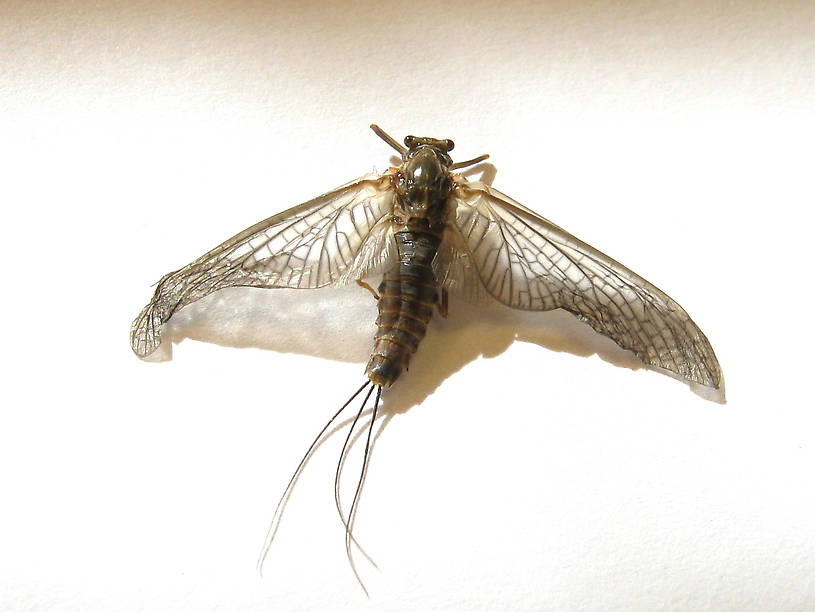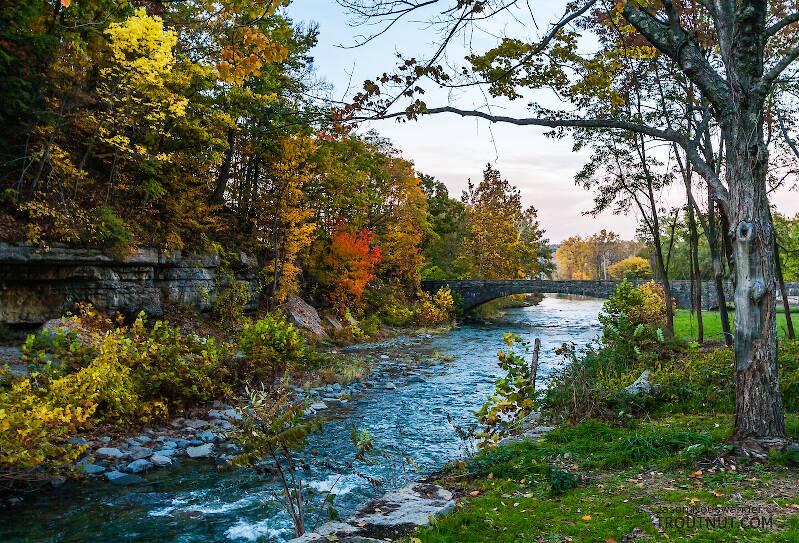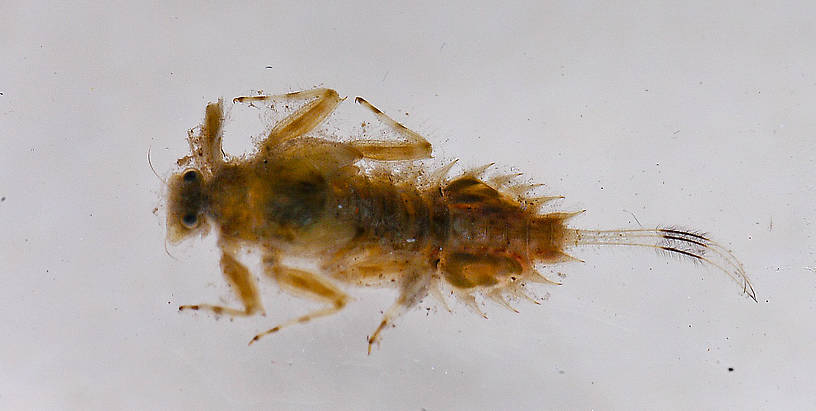
Hex Mayflies
Hexagenia limbata
The famous nocturnal Hex hatch of the Midwest (and a few other lucky locations) stirs to the surface mythically large brown trout that only touch streamers for the rest of the year.
Featured on the forum

Troutnut is a project started in 2003 by salmonid ecologist Jason "Troutnut" Neuswanger to help anglers and
fly tyers unabashedly embrace the entomological side of the sport. Learn more about Troutnut or
support the project for an enhanced experience here.
Drake Mackerels
This common name refers to only one species. Click its scientific name to learn more.
Mayfly Species Timpanoga hecuba
These are sometimes called Drake Mackerels.
Timpanoga hecuba is not abundant enough, and its emergence not concentrated enough to provide great hatches, but where it is locally abundant it creates fishable action because of its large size. This species seems subject to substantial fluctuations in population densities, possibly in relation to the amount of silted habitat they prefer. When silt builds up in drought years, their numbers appear to increase. It is the largest species in the Ephemerellidae family, often rivaling Drunella grandis (Western Green Drake) in length but appearing even stouter due to its dramatic lateral abdominal spines. It contains two subspecies. See the Timpanoga genus hatch page for details.
Anglers call them by a confusing array of names, although many fly shops have fortunately started to clear things up by rightly calling them Hecubas. Great Red Quill and Western Red Drake seem fairly descriptive, and some refer to them as Giant Dark Hendricksons. A fly shop serving Yellowstone out of Gardiner, Montana calls them Drake Mackerels in their hatch chart.
Anglers call them by a confusing array of names, although many fly shops have fortunately started to clear things up by rightly calling them Hecubas. Great Red Quill and Western Red Drake seem fairly descriptive, and some refer to them as Giant Dark Hendricksons. A fly shop serving Yellowstone out of Gardiner, Montana calls them Drake Mackerels in their hatch chart.

This specimen is 14 mm. Technically this is the subspecies T. h. hecuba. The Cascades, Sierras and further West is where the other subspecies, T. h. pacifica is found. The Great Basin seems to have formed a barrier preventing any overlap in their distribution.
See 1 more specimen...



